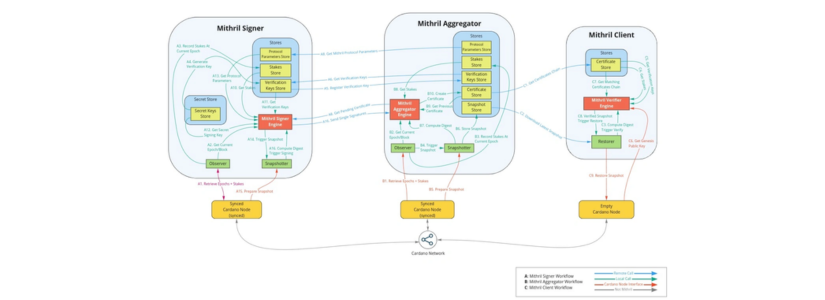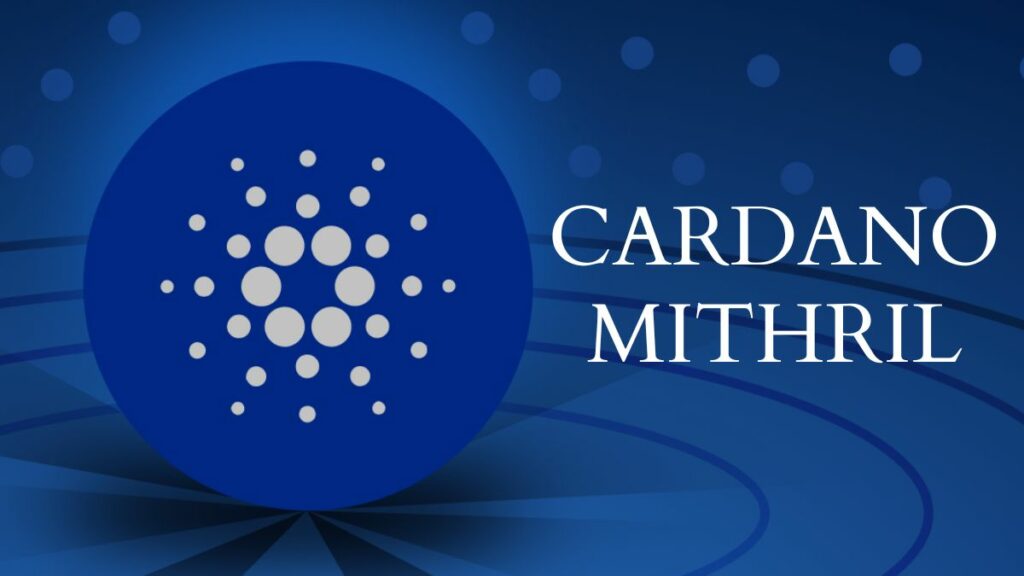The Cardano (ADA) enthusiasts are eagerly awaiting the long-anticipated Mithril mainnet launch, an innovative stake-based signature scheme that promises to revolutionize the synchronization times for nodes on the Cardano network.
Mithril's mainnet release is just around the corner.
Read this blog post to recap what #Mithril is, how it works, and how it helps with the fast bootstrapping of #Cardano nodes. ⤵️ https://t.co/TRknmLhq5q pic.twitter.com/4TJ6u35acG
— Input Output (@InputOutputHK) July 20, 2023
As noted by Olga Hryniuk, the senior technical writer of Input-Output Global (IOG) in a July 20 blog post, Mithril plays a vital role in optimizing the speed and efficiency of nodes’ syncing times on the Cardano network, ultimately contributing to its scalability.
As a proof-of-stake (PoS) protocol, Cardano relies on well-distributed nodes to sync harmoniously, ensuring the network’s utmost efficiency. Meanwhile, Mithril’s unique design facilitates decentralized decision-making and significantly improves synchronization efficiency, thus bolstering the overall security of the Cardano protocol.
Mithril Mainnet Release Nears
The journey towards the Mithril upgrade has been ongoing for several months, with consistent updates on its progress from IOHK. Mithril had its proof of concept released in August 2022 and has since undergone extensive testing by a group of volunteer stake pool operators (SPOs). The final stages of testing are now underway, paving the way for the imminent release of the Mithril mainnet.
One of the exciting aspects of Mithril is its ability to bootstrap a full Cardano node swiftly and efficiently. In the future, Mithril will enable developers to deploy light clients and mobile applications, streamline sidechain operations, and even empower stake-based voting applications and governance solutions.
Mithril Mainnet Architecture and Components

The Mithril architecture comprises three main components: the aggregator, the signer, and the client. Working together, these nodes enhance the efficiency of bootstrapping a Cardano node.
Mithril Signer is a transparent node that operates alongside the SPO’s Cardano node and is responsible for generating new key pairs and taking snapshots of the full state of the blockchain. These snapshots are individually signed using Mithril’s cryptographic primitives, ensuring the integrity and authenticity of the ledger state.
On the other hand, Mithril Aggregator is a trustless node that coordinates the activities of the Mithril signer nodes. It collects the individual signatures from the signers and combines them into Mithril multi-signatures using cryptographic primitives. The aggregator also stores the full Cardano database snapshot archive and ensures its availability and distribution.
Lastly, Mithril Client facilitates the restoration of a Cardano full node. It retrieves a remote snapshot of the blockchain and the associated certificate chain from the Mithril aggregator. Using the same cryptographic mechanisms, the client verifies the authenticity of the retrieved components, ensuring a secure and reliable restoration process.
With the imminent launch of the Mithril mainnet, Cardano’s ecosystem is set to experience increased efficiency, security, and a wider range of applications. As the mainnet release approaches, Input Output Global (IOG) is encouraging stake pool operators (SPOs) to participate in Mithril beta testing on the mainnet.










